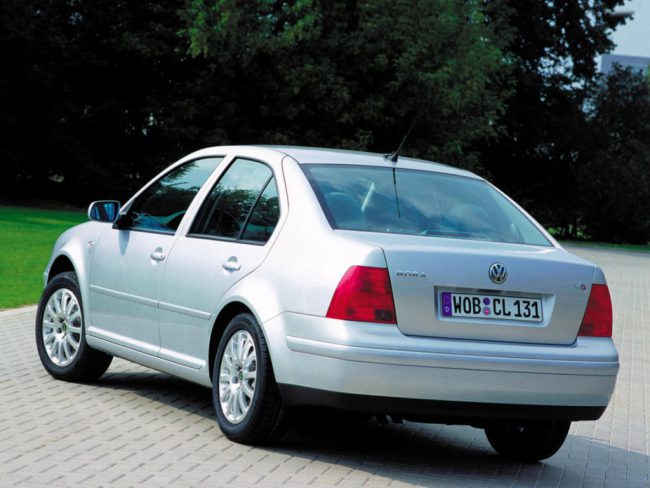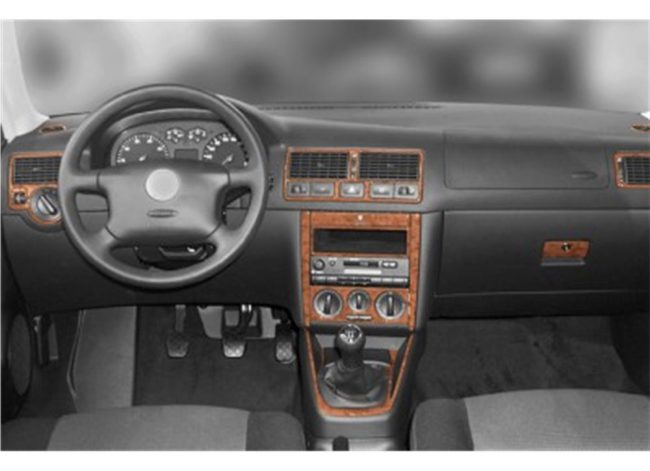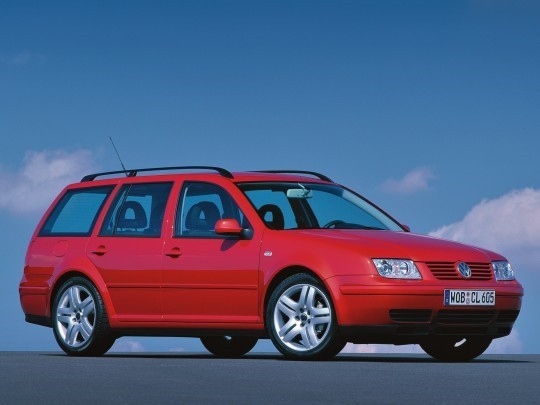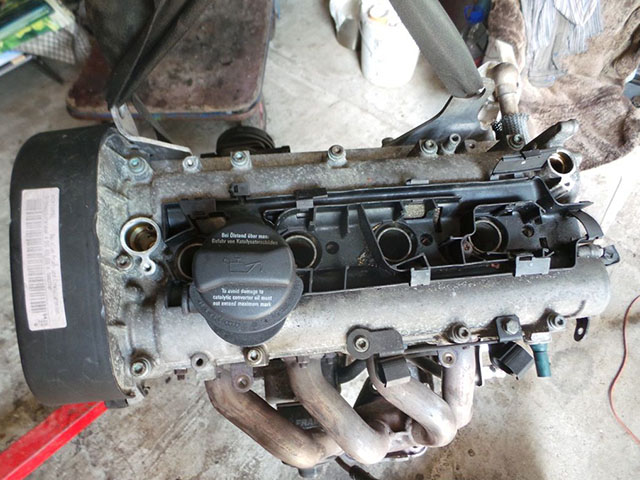
Volkswagen Bora engines
At the end of the XNUMXth century, an urgent need arose at Volkwsagen AG to replace the outdated Jetta and Vento serial models of sedans by that time with more modern sedan and station wagon cars. The new model was named Bora.

History of the model
Although outwardly the car bears little resemblance to a hatchback, it is designed on the compact Golf IV platform. The new car is 230 mm longer than its structural counterpart (4380 mm in the five-seat sedan version). By increasing the length of the rear overhang, the boot capacity has increased to 455 liters. The body of the machines was manufactured using the through-galvanization technology, with a 12-year warranty. Considering that the model was on the assembly line for only 7 years (until 2005), the level of corrosion reliability is 100%.
The strict design of the Bora does not send motorists to the Golf at all. The car is more reminiscent of the legendary Passat, which has been rolling off the assembly line in various serial versions for more than a quarter of a century. The Bora was released in front-wheel drive and all-wheel drive (4Motion) versions. On the front wheels - McPherson independent suspension with anti-roll bar, on the rear - semi-independent beam. Front brakes - disc (ventilated). Drum or disc brakes were installed at the rear.

The car with a three-volume body is offered to customers in the basic version, as well as in the form of Comfortline, Highline and Trendline. The basic equipment includes a power steering, a system for adjusting the reach and tilt of the steering column, tinted glazing with thermal protection, central locking, airbags, air conditioning, and a sound system. The driver's seat is made with height adjustment. Transmission options:
- MCP (five- and six-speed);
- Automatic transmission (four- or five-speed).

In 1999, in addition to the "sedan" version, Bora Variant cars appeared in the "station wagon" form factor on the European and American markets. Despite being based on the same Golf IV platform as the sedans, the Variants received slightly different chassis setups. This translates into a stiffer suspension that requires a slightly different, sharper driving style.
In 2005, the production of the Volkswagen Bora in Europe was suspended. For residents of the American continent, the car was produced in 2005-2011 on the Golf V platform. This is the unofficial second generation of the car, which was put on the conveyor in the Mexican city of Puebla along with the legendary "beetle".
Engines for Volkswagen Bora
For Bora machines, specialists from the engine division of Volkswagen AG have developed several basic lines of power plants:
- 1,9 TDI (1896 cm3);
- 1,6 TSI (1595-1598 cm3);
- 1,8 TSI (1781 cm3);
- 2,3 and 2,8 TSI (2324 and 2792 cm3).
In each line - from one to three or four engines with different layout options and power systems (distributed or direct injection - for gasoline engines, Common Rail direct injection - for diesel engines).
| Marking | A type | Volume, cm3 | Maximum power, kW / h.p. | Supply system |
|---|---|---|---|---|
| AHW, AKQ, APE, AXP, BCA | petrol | 1390 | 55/75 | DOHC, distributed injection |
| AEH, AKL, APF | turbocharged petrol | 1595 | 74 / 100, 74 / 101 | DOHC or OHC, port injection |
| AXR, ATD | –:– | 1896 | 74/100 | distributed injection |
| ATN, AUS, AZD, BCB | petrol | 1598 | 77/105 | DOHC, distributed injection |
| BAD | –:– | 1598 | 81/110 | DOHC direct injection |
| AGN | –:– | 1781 | 92/125 | DOHC, distributed injection |
| AGU, ARX, AUM, BAE | –:– | 1781 | 110/150 | distributed injection |
| AGP, AQM | diesel | 1896 | 50/68 | direct injection |
| AGR | turbocharged diesel | 1896 | 50 / 68, 66 / 90 | Common Rail |
| AHF, ASV | –:– | 1896 | 81/110 | direct injection |
| AJM, AUY | –:– | 1896 | 85/115 | direct injection |
| ASZ | –:– | 1896 | 96/130 | Common Rail |
| ARL | –:– | 1896 | 110/150 | Common Rail |
| AQY, AZF, AZH, AZJ, BBW, APK | petrol | 1984 | 85/115 | distributed injection |
| AGZ | –:– | 2324 | 110/150 | distributed injection |
| AQN | –:– | 2324 | 125/170 | DOHC, distributed injection |
| AQP, WUA, BDE | –:– | 2792 | 147 / 200, 150 / 204 | DOHC, distributed injection |
| AVU, BFQ | –:– | 1595 | 75/102 | distributed injection |
| AXR, ATD | turbocharged petrol | 1896 | 74/100 | distributed injection |
| WUA | petrol | 2792 | 150/204 | injector |
Maximum power of 204 hp developed cars on which 2,8-liter gasoline engines of two assemblies were installed (1 - AQP, AUE, BDE; 2 - AUE). The standard power of the Vokswagen Bora power plants was 110-150 hp. And the most “miniature” engine received only 68 “horses” (factory code AGP, AQM).
The best motor for Bora
The most reliable and maintainable of all the engines that got under the hood of the Bora is the 1,6-liter TSI gasoline engine with the factory code BAD (2001-2005). Features of the power plant:
- timing belt drive and hydraulic lifters;
- two distribution centers (DOHC);
- variable valve timing on the intake shaft;
- all aluminum BC (R4) and cylinder head (16v).

The motor, designed for the Euro IV protocol, had a declared travel resource of 220 thousand km. To ensure reliable systems and mechanisms, it was necessary to fill the engine with 3,6 liters of 5W30 oil. Maximum power - 110 hp Fuel consumption:
- in the city - 8,9 l;
- outside the city - 5,2 liters;
- combined - 6.2 liters.
Despite the high reliability, the BAD engine, like many of its German counterparts, could not get rid of the problem of oil burn and soot on the intake valves. In general, reliability is ensured by an exceptionally high service qualification: the motor is very difficult to maintain and repair, since a large number of measuring equipment and control sensors are installed on it. The main condition for ensuring the normal operation of the motor is the regular replacement of the timing belt every 90 thousand km. run.

